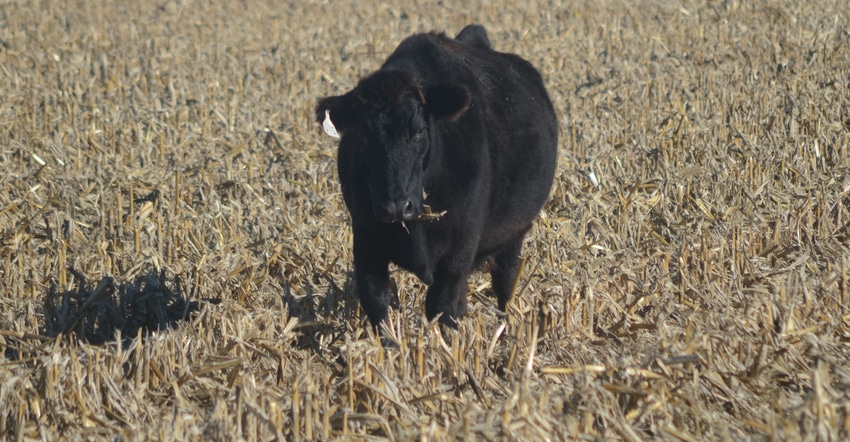January 27, 2017

In recent installments of Resilient Ag Landscapes, we've discussed opportunities to bring cattle back to the land, as well as the soil health benefits and considerations of grazing cover crops with cattle compared to planting cover crops solely for the benefit of soil health.
While there are likely some landowners and farmers who are looking at opportunities to get the most out of their cover crop acres by leasing those acres to cattle owners to graze, those landowners may be a little rusty when it comes to managing cattle.
"As I drive through eastern Nebraska, they've got the best soil, water and climate on the planet, and not enough grazing out here," says Jason Gross, University of Nebraska-Lincoln Extension biological systems engineer. "If I ask, 'What's holding you back? What's stopping you?' Generally, it's fencing and water. But when you look at some of the options, it's not as big of a deal as you'd think."
Gross notes today's fencing systems are a lot simpler than those of 20 to 30 years ago. If there's plenty of forage to graze, and you're only grazing for a few weeks, fencing could be as simple as a single strand 14-gauge wire with a post every 50 to 70 feet, powered by a high-powered energizer.
However, if cattle are going to be on the land for a longer period of time or graze this field perennially, two or three strands are ideal as a semi or permanent fence — that way, the second or third strand can serve as the ground wire.
"If your energizer's a mile away, with a single electric wire and a cow standing on dry soil touches that wire, it has to go through her body, her hooves and a mile of dry soil to get back to the energizer," Gross says. "That's 8,000 volts. That may be a couple volts to nothing by the time it gets to her. If you put a second wire around, and a quarter mile away put a ground rod in, she'll get hit. Proper grounding makes the fence effective and reduces wildlife damage."
"If you buy the materials yourself, it's usually 25 to 30 cents per foot for a two-strand," Gross adds. "With landowners, if you say 'I will build the fence if you will pay for the material,' 9 times out of 10 they'll say yes. If you build you own semipermanent fence and your lease comes up, you just take a skid loader and pull the fences out."
Water is another factor. One of the simplest ways to accomplish this on irrigated fields is dropping a submersible pump down the irrigation well, drilling a solar well, conveyinig water through surface tubing or using tank cisterns.
Another option is hauling water, which may or may not be efficient, depending on your situation. "If you're only going to be out there 30 days, just how inconvenient is hauling water?" Gross asks. "If the gain on those calves is valuable and I can reduce costs and labor from cutting, raking, baling, transporting, grinding and feeding, how much of a problem is hauling 1,000 gallons or so of water a day for a short time?"
If hauling water doesn't work for your situation, it may be worth investing in a more permanent water storage system. If placed on a slope and fed by a pressurized system, a water storage tank could even serve as a way to gravity-feed smaller portable tanks.
If you haven't had cattle on the land for a while, the next question is: Should you graze spring-calving cows, or stocker-backgrounder calves? With high-quality forages growing in late fall or early spring, producers may want to graze growing calves to get their money's worth.
"We have the most cattle in the western part of the state. Shipping cows somewhere for 60 days and then shipping them back is expensive, but shipping calves somewhere for 60 days and selling them is a one-way trip," says Mary Drewnoski, Extension beef systems specialist. "Cattle producers may be willing to pay for a certain cost of gain on that forage."
It's important to consider the risk of cattle getting out, and for producers new to cattle, it's probably better to graze cows, which are fairly low-maintenance. "For most of the state, I would think producers are likely going to have some kind of winter annual as spring forage," Drewnoski adds. "There are a lot of spring-calving cows in Nebraska, and that would fit with grazing a winter annual like cereal rye."
While spring-grazing comes with a certain risk of surface roughness, that's different from compaction, and Drewnoski notes the risk is much lower for producers who have built up soil structure.
"If you just started no-till and decide to start grazing, spring grazing is probably not the best time to graze for you," she says. "I would only consider spring grazing in situations where I have good soil structure. However, fall and winter grazing are fine — especially when the soil is frozen."
In fact, some would argue grazing can improve soil health through animal traffic and the redistribution of nutrients through manure. "There's no silver bullet," Drewnoski adds. "Just adding livestock to the operation doesn't necessarily give you more healthy soil, but with proper management they can be a great tool in the toolbox."
You May Also Like




